Your cart is currently empty!
Month: July 2024
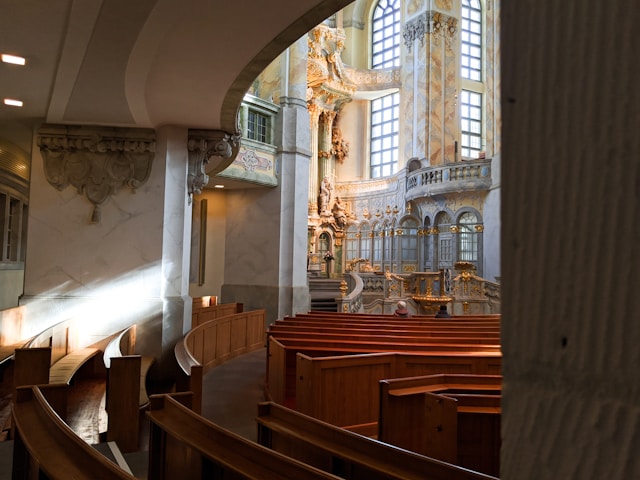
Discover the Rich History and Significance of the Holy Name Church
The Holy Name Church, a cornerstone of the Catholic faith, has a rich and captivating history that spans centuries. Delve into the annals of this sacred institution and uncover the profound impact it has had on countless lives.
Humble Beginnings: The Foundation of the Parish
In the early 19th century, as the population of the nascent town of Chicago began to burgeon, the need for a dedicated Catholic parish became increasingly evident. In 1843, Bishop William Quarter, the first Bishop of Chicago, purchased land on the city’s north side for the establishment of a new church.
The First Holy Name Church (1846-1854)
The inaugural Holy Name Church, a modest wooden structure, was erected in 1846. It quickly became a focal point for the burgeoning Catholic community, providing spiritual guidance and a sense of belonging to its parishioners.
- The first pastor was Father Patrick Walsh, an Irish immigrant who played a pivotal role in the development of the parish.
- The church served as a hub for the city’s Irish Catholic population, offering Mass, sacraments, and community gatherings.
A Period of Growth and Expansion
As the city of Chicago grew and prospered, so too did the Holy Name Parish. In 1854, the original wooden church was replaced with a larger brick structure that could accommodate the growing congregation.
The Second Holy Name Church (1854-1895)
- The second church was designed by architect Ignatius McDermott, who incorporated elements of the Gothic Revival style.
- The parish continued to flourish under the leadership of Father Thomas Foley, who served as pastor from 1865 to 1895.
The Magnificent Third Church
In 1895, the third and current Holy Name Church was completed. This grand edifice, designed by architect Henry J. Schlacks, is considered a masterpiece of ecclesiastical architecture.
- The church’s exterior is adorned with intricate stone carvings, stained glass windows, and a towering steeple.
- The interior is equally impressive, boasting vaulted ceilings, marble altars, and a magnificent pipe organ.
- The Holy Name Church has been a spiritual beacon for Chicago’s Catholics for over a century.
- It has hosted countless baptisms, weddings, and funerals, bearing witness to the lives and faith of generations of parishioners.
The Holy Name Complex
In addition to the church, the Holy Name Parish also encompasses several other structures:
-
Holy Name School
– Founded in 1857, the school provides Catholic education to children from preschool through eighth grade.
-
Holy Name Center
– A multipurpose facility that hosts parish activities, including meetings, events, and social gatherings.
-
Holy Name Cemetery
– Established in 1855, the cemetery is the final resting place for many prominent Chicago Catholics.
Holy Name Today
The Holy Name Parish continues to be a vibrant and active community, serving the spiritual needs of Catholics in Chicago and beyond:
- Weekly Masses are celebrated in English, Spanish, and Polish.
- The parish offers a wide range of ministries, including youth groups, adult education programs, and social outreach services.
- The Holy Name Church is a registered Chicago Landmark and is listed on the National Register of Historic Places.
Visiting the Holy Name Church
Tours: Monday-Friday, 10:00 AM – 4:00 PM Mass Times: Refer to the Holy Name Church website Address: 735 N State Street, Chicago, IL 60610 Experience the beauty and history of the Holy Name Church for yourself. Take a guided tour to admire its architectural splendor and learn about its rich past. Attend a Mass to immerse yourself in the spiritual atmosphere of this sacred space.
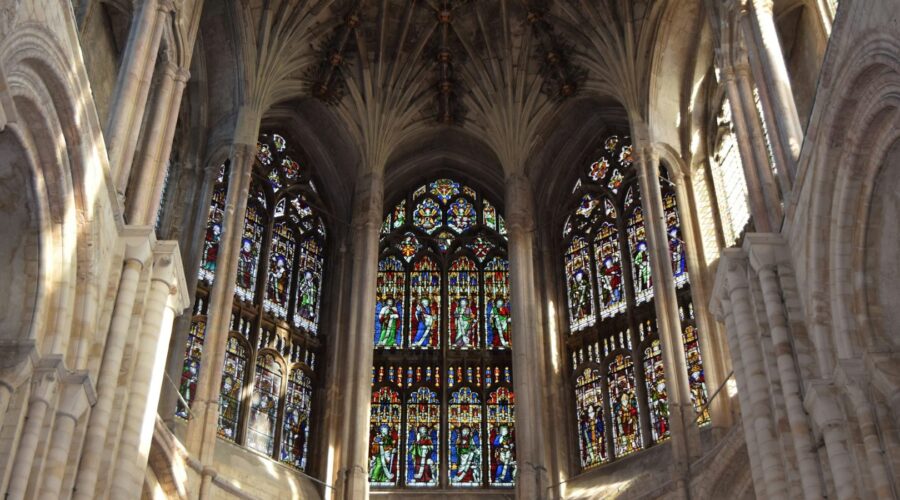
Unveiling the Enchanting Mystery: Our Lady of the Snows
Introduction
The enigmatic figure known as Our Lady of the Snows has captivated hearts and ignited devotion across cultures and centuries. Her story, shrouded in both legend and historical accounts, has become an integral part of religious traditions and a source of wonder for those seeking spiritual connection.
Origins of the Legend
The origins of Our Lady of the Snows can be traced back to a series of miraculous events that occurred in Rome in the 4th century. According to legend, the Virgin Mary appeared to Pope Liberius in a dream, instructing him to build a church on the site where snow would fall in August. This extraordinary request seemed highly improbable, as snowfall was unheard of in Rome during the summer months.
The Miraculous Snowfall
On the morning of August 5th, 358 AD, to the astonishment of the Roman populace, heavy snow fell atop the Esquiline Hill. This miraculous snowfall marked the exact spot where Pope Liberius was instructed to build the church.
Construction of the Basilica of Santa Maria Maggiore
The appearance of Our Lady of the Snows and the subsequent snowfall prompted Pope Liberius to commission the construction of a magnificent basilica on the site. This basilica, known as Santa Maria Maggiore, became one of the most important churches in Rome and a center of Marian devotion.
- The basilica’s architecture is a testament to the grand scale of Roman building.
- The interior is adorned with exquisite mosaics and frescoes depicting scenes from the life of the Virgin Mary.
- The basilica is also home to a revered icon of Our Lady of the Snows, known as the “Salus Populi Romani” (“Salvation of the Roman People”).
The Icon of Our Lady of the Snows
The icon of Our Lady of the Snows, housed within the Basilica of Santa Maria Maggiore, is a precious and cherished object. This iconic image portrays the Virgin Mary holding the infant Jesus in her arms. The background of the icon often depicts the miraculous snowfall that marked the location of the basilica.
- The icon has been the focus of devotion and pilgrimage for centuries.
- It is believed to possess miraculous powers and has been credited with numerous miracles.
- The icon is also a source of inspiration for artists and has been depicted in countless works of art.
Feast of Our Lady of the Snows
The Catholic Church celebrates the Feast of Our Lady of the Snows annually on August 5th. This feast commemorates the miraculous snowfall that led to the construction of the Basilica of Santa Maria Maggiore. It is a day of special devotion and pilgrimage to the basilica, where the icon of Our Lady of the Snows is venerated.
Our Lady of the Snows in Other Cultures
The devotion to Our Lady of the Snows has spread beyond Rome and Italy. In various cultures around the world, the Virgin Mary is revered under the title of Our Lady of the Snows, with shrines and churches dedicated to her.
- In France, the famous pilgrimage site of Notre-Dame des Neiges in the French Alps is dedicated to Our Lady of the Snows.
- In Spain, the Sanctuary of Our Lady of the Snows in the Sierra Nevada mountains is a popular destination for pilgrims.
- In the Americas, there are numerous churches and shrines dedicated to Our Lady of the Snows, particularly in regions with a strong Hispanic influence.
Devotion and Significance
Our Lady of the Snows continues to be a beloved figure in religious traditions. Her story of miraculous intervention and the promise of divine protection have resonated deeply with people of faith.
- She is seen as a patroness of churches, especially those dedicated to her.
- She is invoked for protection against disasters, epidemics, and other calamities.
- Her intercession is sought for fertility, childbirth, and healing.
A Symbol of Hope and Renewal
The story of Our Lady of the Snows is often seen as a symbol of hope and renewal. The miraculous snowfall in the midst of summer represents the unexpected and divine intervention that can bring transformation and new beginnings.
Our Lady of the Snows reminds us that even in the midst of darkness and despair, there is always hope for a brighter tomorrow. Her presence brings comfort and reassurance, reminding us that we are never alone and that divine protection is always within reach.
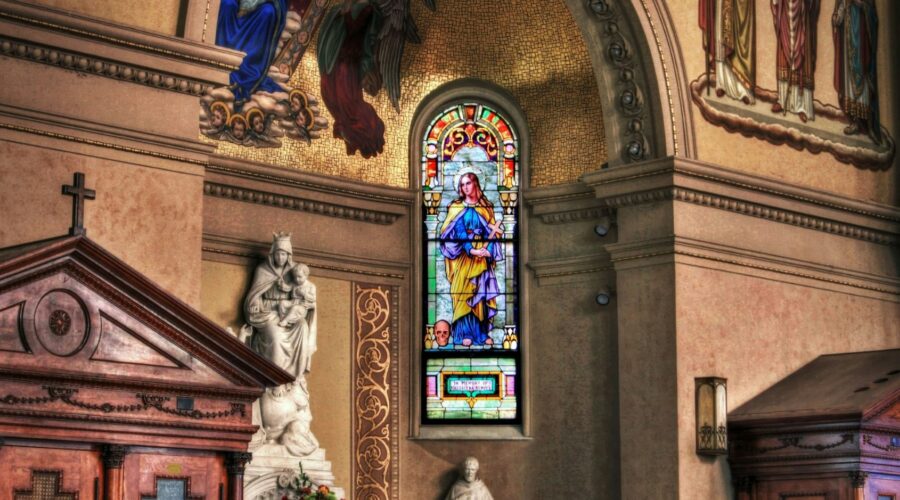
The Eucharist: A Guide to the Catholic Sacrament
Introduction
The Eucharist is a central sacrament in the Catholic Church, symbolizing the presence of Jesus Christ in the bread and wine. It is also known as Holy Communion, as it is a way for Catholics to unite with Christ and receive his grace. This guide will provide a comprehensive overview of the Eucharist, covering its history, significance, and celebration.
History of the Eucharist
The Eucharist traces its roots back to the Last Supper of Jesus Christ with his disciples. According to the Gospel narratives, Jesus took bread and wine and blessed them, saying, “This is my body…this is my blood.” He instructed his disciples to continue this practice in remembrance of him.
In the early centuries of Christianity, the Eucharist was celebrated as part of communal meals called agape feasts. Over time, the Eucharist became more formalized and was celebrated at designated times and places. The doctrine of transubstantiation, which holds that the bread and wine truly become the body and blood of Christ, was established in the 13th century.
Significance of the Eucharist
For Catholics, the Eucharist holds immense significance:
- Real Presence: It is believed that Jesus Christ is truly present in the consecrated bread and wine.
- Sacrament of Unity: It symbolizes the unity of the Church and the bond between believers and Christ.
- Source of Grace: It is a means of receiving God’s grace and forgiveness.
- Nourishment for the Soul: It is seen as spiritual nourishment that sustains the faith of believers.
Celebration of the Eucharist
The Eucharist is celebrated at Mass, the central liturgical service of the Catholic Church. The Mass consists of two main parts:
The Liturgy of the Word
This part includes readings from the Bible, a homily, and prayers. It focuses on the proclamation of God’s word and the preparation for the Eucharist.
The Liturgy of the Eucharist
This part begins with the offering of bread and wine. The priest consecrates the bread and wine, invoking the words of Jesus at the Last Supper. The consecrated bread and wine are then distributed to the congregation.
Eucharistic Theology
There are various theological perspectives on the Eucharist:
Transubstantiation
The Catholic Church teaches the doctrine of transubstantiation, which holds that the bread and wine completely transform into the body and blood of Christ while maintaining their outward appearance.
Consubstantiation
According to this Protestant belief, the bread and wine become the body and blood of Christ along with their own substances.
Memorialism
Some Protestant traditions view the Eucharist as a symbolic representation of Jesus Christ, rather than his actual presence.
Preparation for Eucharist
To receive the Eucharist worthily, Catholics are expected to be in a state of grace, meaning they are free from serious sin. Preparation for Eucharist may include confession, prayer, and examination of conscience.
Receiving the Eucharist
When receiving the Eucharist, Catholics typically bow their heads and say, “Amen.” The consecrated bread is placed on the tongue, and the consecrated wine is sipped from a chalice.
Conclusion
The Eucharist is a cornerstone of Catholic faith and practice. It symbolizes the real presence of Jesus Christ, provides spiritual nourishment, and fosters unity within the Church. Understanding the history, significance, and celebration of the Eucharist empowers Catholics to engage fully in this transformative sacrament.
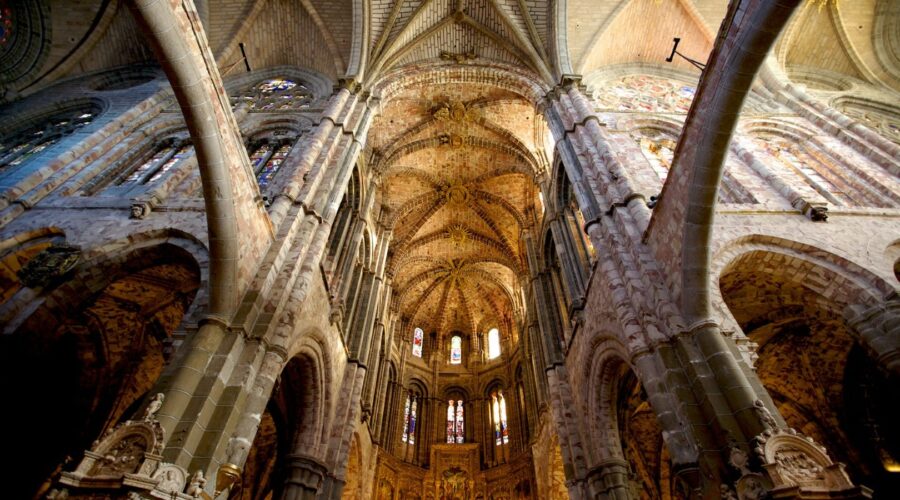
Holy Redeemer: A Beacon of Faith and Compassion
An Overview
The Holy Redeemer is a revered figure in Christianity, embodying the ultimate sacrifice of Jesus Christ for the salvation of humanity. As the Son of God, Jesus’s crucifixion on Calvary marked a pivotal moment in history, paving the way for redemption and eternal life for all who believe in Him.
The Story of the Holy Redeemer
The Incarnation
The story of the Holy Redeemer begins with the Incarnation, when God sent His Son Jesus to Earth in human form. Born of the Virgin Mary, Jesus lived among humans, preaching a message of love, compassion, and forgiveness.
The Crucifixion
Jesus’s mission culminated in His arrest and crucifixion. Accused of blasphemy and sedition, He was sentenced to death and died on the cross. His death, however, was not the end, but rather the beginning of a new era.
The Resurrection
Three days after His crucifixion, Jesus rose from the dead. His Resurrection proved His divinity and the triumph of life over death. The risen Jesus appeared to His disciples, reaffirming their faith and setting the stage for the spread of Christianity.
The Significance of the Holy Redeemer
Redemption from Sin
The Holy Redeemer’s primary role is to provide redemption from sin. Through His death and resurrection, He paid the ultimate price for the sins of humanity. By believing in Him and accepting His sacrifice, individuals can receive forgiveness and reconciliation with God.
Eternal Life
The Holy Redeemer also offers eternal life to those who follow Him. The Bible teaches that those who believe in Jesus will not perish but have everlasting life (John 3:16). This eternal life is a state of perfect communion with God and freedom from suffering.
Peace and Hope
The Holy Redeemer brings peace and hope to the hearts of His followers. In a world filled with uncertainty and despair, Jesus offers comfort and assurance through His presence and promises of a brighter future.
How to Receive the Holy Redeemer
Accepting Jesus as Savior
The only way to receive the Holy Redeemer is by accepting Jesus Christ as one’s personal Savior. This involves acknowledging one’s sinfulness, believing in Jesus’s death and resurrection, and repenting of past sins.
Prayer and Faith
Prayer and faith are essential in receiving the Holy Redeemer. By praying to Jesus and trusting in His promises, individuals can experience the transformative power of His grace.
Conclusion
The Holy Redeemer is the cornerstone of the Christian faith. His life, death, and resurrection brought about the redemption of humanity and the promise of eternal life. By accepting Jesus as Savior, individuals can experience the transformative power of His grace, receive forgiveness, and find peace and hope in a world filled with challenges.
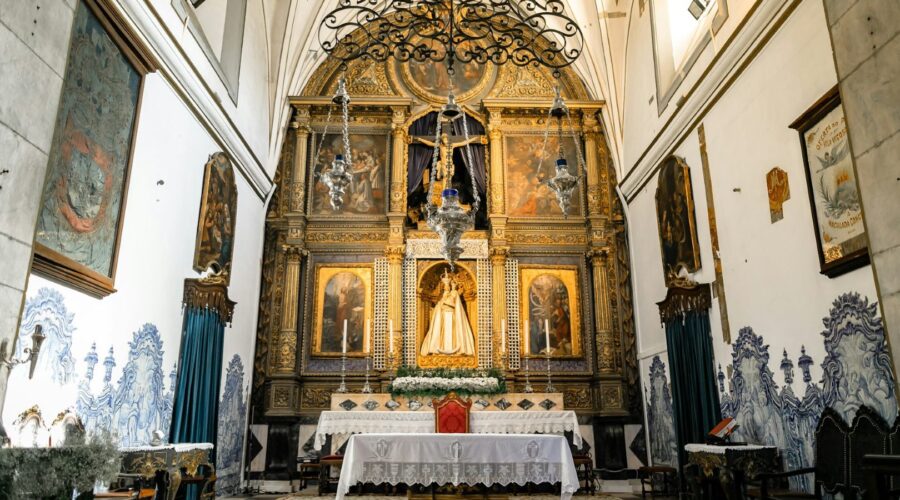
Discover the Vibrant Korean Church: A Comprehensive Guide to its History, Culture, and Impact
Introduction
Korean churches have made a significant impact on the global Christian landscape. With their passionate worship, fervent evangelism, and thriving ministries, they have become a beacon of faith for countless individuals around the world. In this comprehensive guide, we will delve into the history, culture, and impact of Korean churches, providing insights into their unique characteristics and the reasons behind their remarkable success.
History of Korean Churches
Early Beginnings
Christianity was first introduced to Korea in the late 18th century by European missionaries. However, it faced significant resistance from the ruling Confucian government, which considered it a threat to traditional Korean values. Despite these obstacles, Christianity persisted, with the first Korean convert baptized in 1784.
Revival and Growth
In the 19th and early 20th centuries, Christianity experienced a revival in Korea due to factors such as the arrival of American missionaries, the Sino-Japanese War, and the Korean War. This period saw the establishment of numerous churches and the spread of the faith throughout the country.
Post-Korean War Era
After the Korean War, Korean churches entered a period of rapid growth and expansion. The government’s support of Christianity, the economic boom, and the rise of Pentecostalism contributed to their flourishing. Today, Korea boasts one of the highest concentrations of Christians in the world.
Culture of Korean Churches
Emphasis on Worship
Korean churches are known for their passionate and energetic worship services. Music plays a central role, with lively hymns and contemporary praise songs accompanied by enthusiastic dance and clapping. Worship is seen as a way of expressing gratitude, honoring God, and connecting with the divine.
Biblical Literacy
Korean Christians place great emphasis on biblical literacy. Bible study is an integral part of church life, with many churches offering regular classes, seminars, and study groups. Members are encouraged to read and understand the Bible for themselves, fostering a deep understanding of Christian doctrine and principles.
Prayer and Intercession
Prayer is central to the Korean Christian experience. Churches hold regular prayer meetings, during which members come together to pray for their needs, the needs of the church, and the needs of the world. Prayer is seen as a powerful force for change and a way to connect with God.
Impact of Korean Churches
Evangelism and Missions
Korean churches have a strong commitment to evangelism and missions. They actively engage in outreach programs, both within Korea and internationally. Korean missionaries are found in over 170 countries, sharing the Christian message and providing humanitarian aid.
Social Services
Korean churches play a significant role in providing social services to their communities. They run schools, orphanages, medical clinics, and other institutions that meet the needs of the poor, the marginalized, and the elderly. Their social outreach programs often extend beyond the Christian community, fostering a spirit of love and compassion.
Economic Development
Through their various business and entrepreneurial ventures, Korean Christians have made significant contributions to the Korean economy. Many successful Christian-owned businesses have emerged, providing employment and economic growth. The strong work ethic and business acumen of Korean Christians have been instrumental in Korea’s economic development.
Challenges and Opportunities
Despite their remarkable success, Korean churches face certain challenges:
- Balancing Growth and Unity: Maintaining unity and harmony within rapidly growing congregations can be a challenge.
- Generation Gap: Differences in values and beliefs between older and younger generations can create tensions within churches.
- Isolation and Assimilation: Korean churches sometimes struggle with isolation from the larger Christian community and assimilation into Western culture.
These challenges also present opportunities for growth and adaptation:
- Building Bridges: Korean churches can build bridges with other Christian traditions and diverse communities, promoting unity and understanding.
- Ministering to Younger Generations: Churches can engage with younger generations through contemporary worship styles, relevant teachings, and meaningful outreach programs.
- Embracing Cultural Diversity: Churches can embrace the diversity within their congregations and create welcoming environments for people of different ethnicities and backgrounds.
Conclusion
Korean churches have played a vital role in the growth of Christianity globally. Their passionate worship, fervent evangelism, and commitment to social service have made them a force for good in their communities and around the world. As they navigate the challenges and opportunities of the future, Korean churches will continue to be a source of inspiration and a beacon of hope for countless individuals seeking faith and transformation.
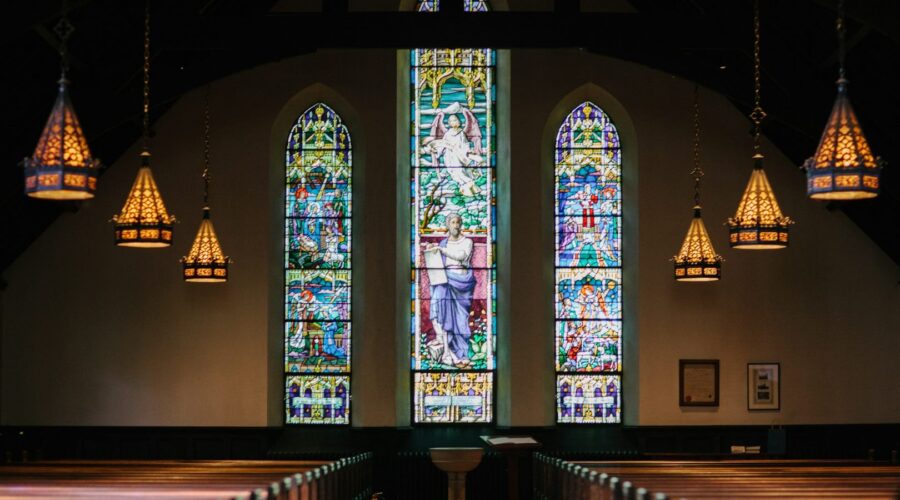
Discover the Evangelical Bible: A Comprehensive Guide to Its History, Beliefs, and Impact
Introduction
The Evangelical Bible, a translation of the Christian Scriptures, holds a significant place in the faith and practice of evangelical Christians. It has shaped their doctrine, devotion, and mission, leaving a lasting impact on individuals, communities, and societies worldwide.
History of the Evangelical Bible
Early Translations
The Evangelical Bible traces its roots to the Protestant Reformation in the 16th century, when reformers like Martin Luther and William Tyndale emphasized the importance of translating the Bible into vernacular languages so that ordinary people could read and understand it for themselves.
The King James Bible (KJV)
In 1611, the King James Bible (KJV), commissioned by King James I of England, became the standard English translation for centuries. It was a major revision of earlier Bibles, incorporating insights from contemporary scholarship.
Modern Evangelical Translations
In the 19th and 20th centuries, new evangelical translations emerged, such as the American Standard Version (ASV), Revised Standard Version (RSV), and New International Version (NIV). These translations sought to update the language and reflect advances in biblical scholarship while maintaining faithfulness to the original text.
Doctrinal Emphases of the Evangelical Bible
Sola Scriptura
Evangelicals uphold the principle of sola scriptura, believing that the Bible is the sole authority for faith and practice. They reject extra-biblical traditions or interpretations that do not have clear biblical support.
Justification by Faith Alone
The Evangelical Bible emphasizes the doctrine of justification by faith alone. It teaches that individuals are forgiven of their sins and reconciled with God solely through their faith in Jesus Christ’s death and resurrection, not by their good works.
The Importance of Evangelism
The Evangelical Bible places a strong emphasis on spreading the gospel message to the unsaved. Evangelicals believe they have a duty to share their faith with others and to make disciples of all nations.
Impact of the Evangelical Bible
Personal Transformation
The Evangelical Bible has had a profound impact on the lives of countless individuals. Its teachings on sin, grace, and redemption have inspired personal transformation, leading people to abandon sinful practices and embrace a life of obedience to God.
Social Justice
Evangelicals have also been deeply involved in social justice issues, such as abolitionism, civil rights, and poverty reduction. Their scriptural understanding of human dignity and justice has motivated them to advocate for the oppressed and marginalized.
Global Missions
The Evangelical Bible has fueled a global mission movement that has spread Christianity to every corner of the world. Evangelical missionaries have established churches, schools, and hospitals, bringing hope and transformation to countless communities.
Tips for Studying the Evangelical Bible
- Pray before reading: Ask God to guide your understanding and open your heart to his truth.
- Read in context: Don’t isolate verses; read them within their chapter and book sections to grasp their intended meaning.
- Use commentaries and study notes: These resources can provide additional insights and context that can enhance your understanding.
- Attend Bible study groups: Discussing the Bible with others can deepen your appreciation and challenge your perspectives.
- Reflect on your reading: Take time to meditate on what you have read and how it applies to your life.
Conclusion
The Evangelical Bible is a precious resource that has shaped the lives of countless Christians and impacted the course of history. By understanding its history, doctrines, and impact, we can better appreciate the role it plays in the faith and mission of evangelical churches around the world.

Unveiling the Devotion to Our Lady of Mercy: A Guide to Her History, Miracles, and Veneration
Understanding the Origins of the Devotion
The devotion to Our Lady of Mercy has its roots in the traditions of the Catholic Church. Its origins can be traced back to the 13th century in Barcelona, Spain. The devotion became widespread in the 17th century after several miraculous interventions attributed to Our Lady of Mercy.
According to legend, in 1218, Saint Peter Nolasco, a wealthy merchant, experienced a vision of Our Lady. In the vision, Mary appeared to him holding a group of captive Christians. Inspired by this vision, Saint Peter Nolasco founded the Order of Mercedarians, a religious order dedicated to ransoming Christian captives from Muslim pirates.
Miracles and Legends
Over the centuries, numerous miracles have been attributed to Our Lady of Mercy. Some of the most notable include:
- The “Redemption of Captives”: The Mercedarians became renowned for their mission of ransoming captives. They would often negotiate with Muslim rulers, using donations from pious Catholics, to secure the release of Christian prisoners.
- The “Miracle of the Rose”: Saint Raymond of Penyafort, a Mercedarian friar, is said to have had a vision of Our Lady. In the vision, Mary gave him a white rose, symbolizing the purity and innocence of the captives.
- The “Miracle of the Eucharistic Host”: It is believed that during a battle between Christians and Muslims, a Mercedarian friar carrying the Eucharist was killed. The host was found in his hands, miraculously preserved and unharmed.
Devotional Practices
The devotion to Our Lady of Mercy is practiced in various forms around the world:
Prayer
The “Ransom Prayer” is a traditional prayer dedicated to Our Lady of Mercy. It is used to seek her intercession for the liberation of captives and the souls in purgatory.
Feast Day
The feast day of Our Lady of Mercy is celebrated on September 24th in the Catholic Church.
Patronage
Our Lady of Mercy is the patron of numerous countries, cities, and institutions, including:
- Barcelona, Spain
- Paraguay
- Dominican Republic
- Order of Mercedarians
Sanctuaries and Shrines
There are several notable sanctuaries and shrines dedicated to Our Lady of Mercy:
- Barcelona, Spain: The Basilica of Our Lady of Mercy (Basílica de la Mare de Déu de la Mercè) is a Gothic church in Barcelona that is the primary shrine to Our Lady of Mercy.
- Lima, Peru: The Sanctuary of Our Lady of Mercy (Santuario de Nuestra Señora de la Merced) is a 17th-century church that houses a venerated statue of Our Lady of Mercy.
- Manila, Philippines: The Church of Our Lady of Mercy (Minor Basilica of Our Lady of Mercy) is a Baroque church in Manila that is the oldest Marian sanctuary in the Philippines.
Conclusion
The devotion to Our Lady of Mercy is a profound expression of faith and trust in God’s loving care. Through her intercession, countless captives have been freed, miracles have occurred, and countless souls have found solace and hope. As we venerate Our Lady of Mercy, let us strive to imitate her virtues of compassion, courage, and unwavering faith.
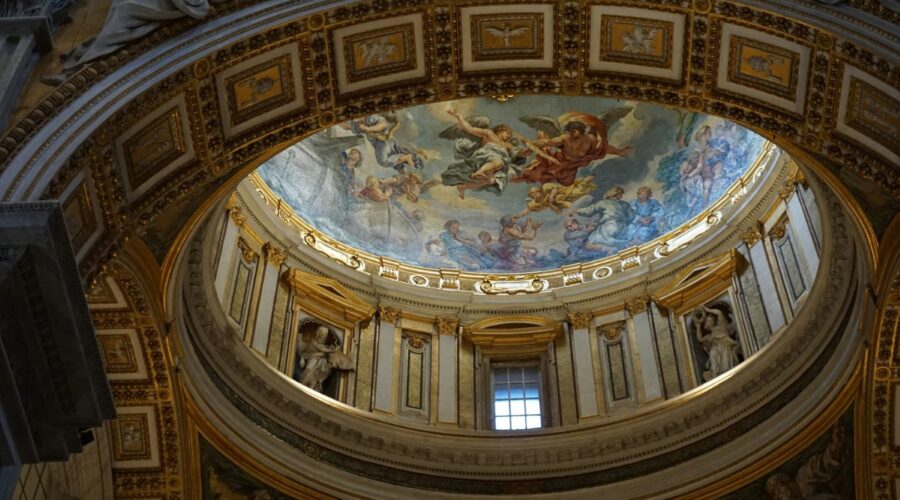
Discover the Vibrant Community and Enduring Faith of Faith Lutheran
About Faith Lutheran
Established in 1953, Faith Lutheran Church is a vibrant, welcoming community of faith that has been a cornerstone of the [Insert City/Neighborhood] community for over six decades. With a dedicated congregation and a commitment to serving both members and the wider community, Faith Lutheran offers a wide range of ministries and spiritual programs designed to enrich lives and foster a connection with God.
Our Mission and Values
- To proclaim the Gospel of Jesus Christ to all people
- To grow in faith, hope, and love through worship, study, and service
- To care for one another and reach out to our community with compassion and grace
Our Worship Services and Ministries
At Faith Lutheran, we offer a variety of worship services to accommodate the diverse needs of our congregation:
Sunday Worship Services:
- Traditional Service: 8:30 AM
- Contemporary Service: 10:30 AM
- Youth Service: 12:30 PM (during school year)
Other Worship Opportunities:
- Midweek Worship: Wednesday evenings
- Special Services: Holy Week, Christmas Eve, etc.
Beyond worship services, Faith Lutheran offers a wide range of ministries and programs to connect members and serve the community:
Ministries for All Ages:
- Children’s Sunday School
- Youth Group
- Adult Bible Study
- Women’s Ministry
- Men’s Ministry
Outreach and Service:
- Community Meal Program
- Food Pantry
- Tutoring Program
- Mission Trips
Our Beliefs and Denomination
Faith Lutheran is a member of the Evangelical Lutheran Church in America (ELCA), which is the largest Lutheran denomination in the United States. Our beliefs are rooted in the teachings of the Bible and the Lutheran Confessions, and we emphasize the following:
Grace and Salvation:
We believe that we are saved by grace through faith in Jesus Christ, and that God’s love and forgiveness are extended to all.
Scripture and Tradition:
We believe that the Bible is the inspired Word of God and the source of our faith, but we also value the insights of Christian tradition.
Sacraments:
We celebrate two sacraments: Holy Communion (the Lord’s Supper) and Baptism. These sacraments are outward signs of God’s grace and love.
Our Campus and Facilities
Faith Lutheran is located in a convenient and accessible location at [Insert Address]. Our campus includes:
- Sanctuary
- Fellowship Hall
- Classrooms and Meeting Rooms
- Library
- Playground
Our facilities are well-maintained and provide a welcoming and comfortable environment for worship, fellowship, and service.
Get Involved and Connect
We warmly invite you to visit us at Faith Lutheran and experience our vibrant community and uplifting worship services. Here are some ways to get involved:
Attend a Worship Service
Join us for one of our Sunday worship services and discover the joy of worshiping together.
Explore Our Ministries
Learn more about our various ministries and outreach programs and find ways to serve your community.
Connect Online
Visit our website at [Insert Website Address] or follow us on social media to stay up-to-date on events and announcements.
Conclusion
Faith Lutheran Church is a vibrant and welcoming community of faith that offers a wide range of worship services, ministries, and outreach programs. Rooted in the teachings of the Bible and the Lutheran Confessions, we believe in the grace and salvation of Jesus Christ and strive to live out our faith through service to our neighbors and our community. We invite you to join us on this journey of faith and experience the transformative power of God’s love and grace.

Immerse Yourself in the Vibrant Community of Northside Christian Church
About Northside Christian Church
Nestled in the vibrant heart of Anderson, Indiana, Northside Christian Church has been a beacon of faith and fellowship for over a century. Since its inception in 1921, the church has witnessed countless lives transformed through the transformative power of God’s love.
As a congregation that embraces diversity and inclusivity, Northside Christian Church welcomes people from all walks of life regardless of their background, beliefs, or life experiences. The church’s welcoming and supportive environment fosters a sense of belonging for its members.
Mission and Vision
Northside Christian Church is guided by a mission to “Connect people to Jesus Christ and help them grow in their faith.” This mission is rooted in a vision to be a church that is:
- Relevant and engaging
- Welcoming and inclusive
- Transformational and life-giving
Core Values
The core values of Northside Christian Church shape every aspect of its ministry and outreach:
- Love: Unconditional love for God, ourselves, and others
- Grace: Unmerited favor and forgiveness extended to all
- Service: Using our gifts and resources to bless the community
- Excellence: Striving for the highest standards in everything we do
- Connection: Building strong relationships within the church and beyond
Ministries and Programs
Northside Christian Church offers a wide range of ministries and programs to cater to the spiritual growth, social connections, and practical needs of its members and the wider community:
Worship Services
Sunday morning services feature uplifting music, inspiring messages, and opportunities for prayer and communion.
Life Groups
Small group gatherings that foster spiritual growth, accountability, and fellowship.
Children’s Ministry
A vibrant and age-appropriate program for children from birth to 5th grade.
Youth Ministry
Engaging and relevant ministry for middle school and high school students.
Adult Discipleship
Classes and resources designed to nurture the spiritual maturity of adults.
Community Outreach
The church actively involves itself in community service projects, including food drives, homeless outreach, and mentorship programs.
Leadership
Northside Christian Church is led by a team of dedicated pastors who shepherd the congregation and oversee the church’s ministries:
- Lead Pastor: Rev. Dr. David Weekley
- Executive Pastor: Rev. Brad Bennett
- Associate Pastors: Rev. John Smith, Rev. Mary Johnson
Location and Contact Information
Northside Christian Church is located at 302 E 53rd St, Anderson, IN 46013.
Phone: (765) 643-4660
Email: [email protected]
Website: www.northsidechristian.org
Conclusion
Northside Christian Church is a vibrant and thriving community of faith that welcomes people from all backgrounds into a loving and supportive environment. With a strong emphasis on spiritual growth, fellowship, and service, the church offers a transformative experience for those seeking a deeper connection with God and a purposeful life.
Whether you are a seasoned believer or someone who is just starting to explore the Christian faith, Northside Christian Church invites you to join their journey of faith, hope, and love.
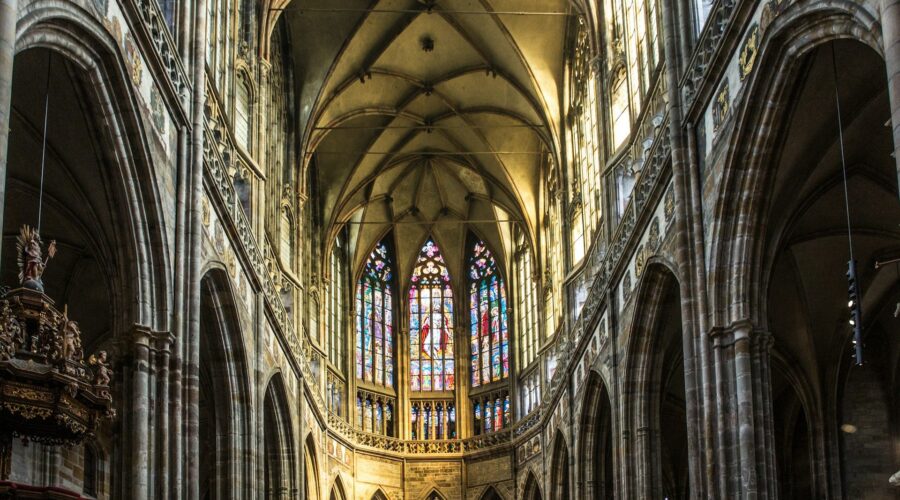
Saint John Neumann: A Life of Sainthood and Service
Introduction
Saint John Neumann, a Redemptorist priest, was a tireless advocate for the poor and marginalized. Born in Bohemia in 1811, he immigrated to the United States in 1836 and became the first bishop of Philadelphia in 1852. Throughout his life, Neumann dedicated himself to serving others and spreading the Gospel message.
Early Life and Education
John Neumann was born in Prachatice, Bohemia, on March 28, 1811. At a young age, he showed a strong interest in the priesthood and entered the seminary at the age of 14. After completing his theological studies, he was ordained a priest in 1836.
Immigration to the United States
In 1836, Neumann immigrated to the United States and joined the Redemptorist order in Baltimore, Maryland. He quickly gained recognition for his preaching and pastoral skills, especially among the German-speaking population.
Ministry in Pittsburgh
In 1840, Neumann was appointed pastor of the Holy Trinity Church in Pittsburgh, Pennsylvania. During his time there, he established a school for the poor, a home for the elderly, and a hospital for the sick.
Founding of the Sisters of the Third Order of St. Francis
In 1855, Neumann founded the Sisters of the Third Order of St. Francis, a religious order dedicated to caring for the sick and poor. The order quickly grew and established several hospitals and orphanages throughout the United States.
Bishop of Philadelphia
In 1852, Neumann was appointed the first bishop of Philadelphia. As bishop, he continued his work of serving the poor and marginalized, establishing numerous parishes, schools, and orphanages.
Death and Canonization
Neumann died on January 5, 1860, at the age of 48. He was canonized by Pope Paul VI in 1977.
Legacy
Saint John Neumann is remembered for his unwavering dedication to serving the poor and marginalized. He left a lasting legacy through the numerous institutions he founded and the inspiration he provided to countless others.
Table of Saint John Neumann’s Major Contributions
| Contribution | Description |
|—|—|
| Founding of the Sisters of the Third Order of St. Francis | A religious order dedicated to caring for the sick and poor |
| Establishment of schools and orphanages | Provided education and care for marginalized children |
| Opening of hospitals | Provided healthcare for the sick and needy |
| Ordination of priests | Trained and supported priests to serve the growing Catholic population |
| Translation of Catholic literature | Made religious texts available in the German language |Links to Related Resources
* Catholic Online: Saint John Neumann
* Sisters of the Third Order of St. Francis
* Archdiocese of Philadelphia: Pastors, Bishops, and ArchbishopsConclusion
Saint John Neumann was a remarkable figure in American Catholicism. His life and ministry exemplified the Gospel message of love and service to others. His legacy continues to inspire and guide Catholics today.

The Ultimate Guide to Understanding and Utilizing Church Management Software
Church management software is an invaluable tool that can help churches of all sizes streamline their operations and improve their efficiency. From managing membership data to tracking finances, these systems offer a wide range of features to help churches run more effectively.
Benefits of Using Church Management Software
- Streamlined Member Management: Church management software helps churches maintain accurate and up-to-date member information, track attendance, and communicate with members easily.
- Financial Management: These systems provide tools for tracking income, expenses, and donations, as well as creating budgets and reports to ensure financial transparency and accountability.
- Event Planning and Coordination: Church management software can assist in planning and organizing events, such as worship services, conferences, and fundraisers, by managing schedules, RSVPs, and other details.
- Communication and Outreach: Many systems offer features for sending newsletters, emails, and text messages to members and potential members, facilitating effective communication and outreach.
- Centralized Data Management: One of the key benefits of church management software is the ability to centralize all church data in one secure location, making it easily accessible and reducing the risk of data loss.
Key Features to Look for in Church Management Software
When choosing a church management software solution, it’s important to consider the specific needs of your church. However, some key features to look for include:
Member Management
- Contact management (including demographics, photos, and custom fields)
- Attendance tracking
- Online member directory
- Communication and engagement tools (such as newsletters and emails)
Financial Management
- Online giving and donation processing
- Expense tracking and budgeting
- Financial reporting and analysis
Event Planning and Coordination
- Event scheduling and RSVP management
- Volunteer management
- Ticketing and registration
Communication and Outreach
- Email and text message marketing
- Website integration
- Social media integration
Other Considerations
- Ease of use and intuitive interface
- Security and data protection measures
- Scalability and flexibility to meet future growth
- Customer support and training
Tips for Implementing Church Management Software
- Identify Your Needs: Clearly define your church’s needs and goals before choosing a software solution.
- Research and Compare: Explore different software options, gather information, and compare features to find the best fit for your church.
- Get Feedback: Involve key staff and volunteers in the decision-making process to ensure buy-in and support.
- Set Up Properly: Carefully configure the software to match your church’s specific requirements and processes.
- Train Your Team: Provide thorough training to all users to ensure they understand how to use the system effectively.
- Monitor and Evaluate: Regularly review usage and performance to identify areas for improvement and ensure the software is meeting your needs.
Conclusion
Church management software is a valuable tool that can help churches of all sizes improve their efficiency, streamline their operations, and strengthen their connections with members. By carefully considering the features, implementation, and ongoing use of your church management software, you can harness its full potential to support your church’s mission and growth.
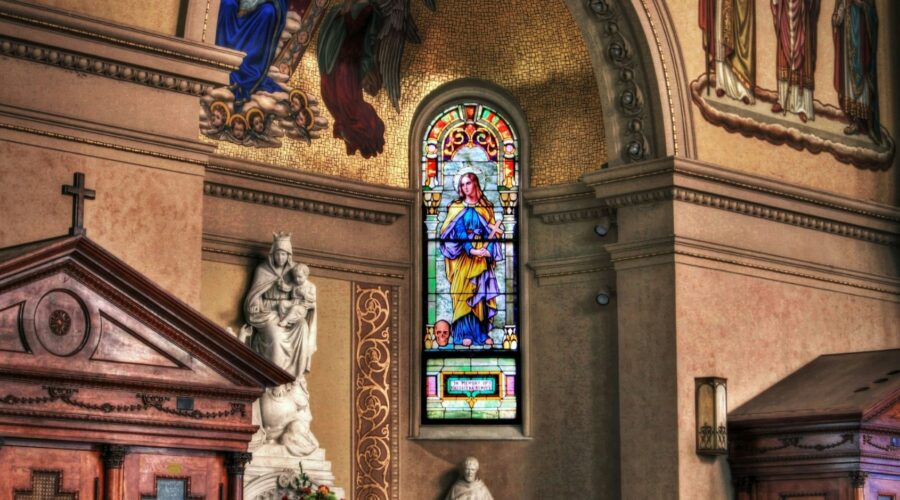
St. Gregory: A Comprehensive Guide to His Life and Legacy
Introduction
St. Gregory is a revered figure in Christianity and has left an enduring legacy that has shaped the faith至今. This comprehensive guide delves into the life, works, and impact of this influential saint, providing insights into his contributions to theology, liturgy, and Catholicism.
Early Life and Education
- Born Gregory I in Rome around 540 AD
- Came from a wealthy and aristocratic family
- Received a classical education, studying grammar, rhetoric, and philosophy
- Entered public service at a young age, holding high-ranking positions in the city administration
Papal Career
- Elected Pope in 590 AD, taking the name Gregory I
- Faced numerous challenges during his papacy, including political strife, barbarian invasions, and a plague outbreak
- Established the Roman Catholic mission to England, sending Saint Augustine of Canterbury to convert the Anglo-Saxons
- Introduced liturgical reforms, including the Gregorian chant and the establishment of a standardized Mass
Theological Contributions
Gregory I was known for his theological writings and commentaries:
- Moralia in Job: A commentary on the biblical book of Job, exploring its moral and allegorical meanings
- Homilies on the Gospels: A series of sermons on the Gospel readings, providing practical and spiritual guidance
- Dialogues: A collection of anecdotes and legends about the lives of saints and holy men
Legacy and Impact
Gregory I left a profound legacy on Christianity:
- Influence on the Gregorian Calendar: His name is associated with the calendar system that is still used today
- Patron Saint of Teachers: Honored for his contributions to education and the promotion of literacy
- Father of the Liturgy: His reforms to the Mass and the introduction of Gregorian chant standardized and enriched Catholic worship
- Died in Rome in 604 AD
- Canonized as a saint shortly after his death
- Remains are interred in St. Peter’s Basilica in Rome
- Feast day celebrated on September 3rd
Later Life and Veneration
Timeline of St. Gregory’s Life Year Event c. 540 AD Born Gregory I in Rome c. 560 AD Entered public service 590 AD Elected Pope c. 596 AD Sent Saint Augustine of Canterbury to England 604 AD Died in Rome Conclusion
St. Gregory I was a multifaceted figure whose contributions to theology, liturgy, and Catholicism have had a lasting impact on the faith. His reforms, writings, and mission to England laid the foundation for the spread and development of Christianity in Europe. As a patron saint of teachers and a symbol of the power of prayer, St. Gregory continues to inspire and guide believers to this day.